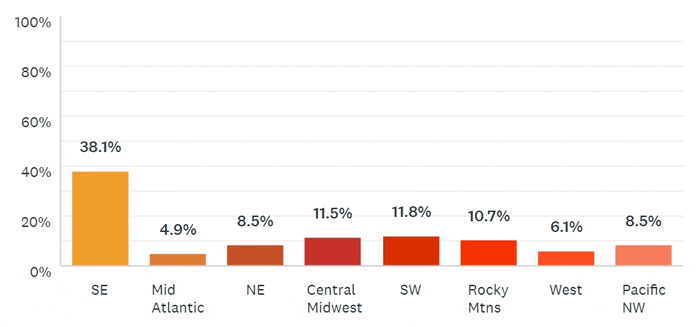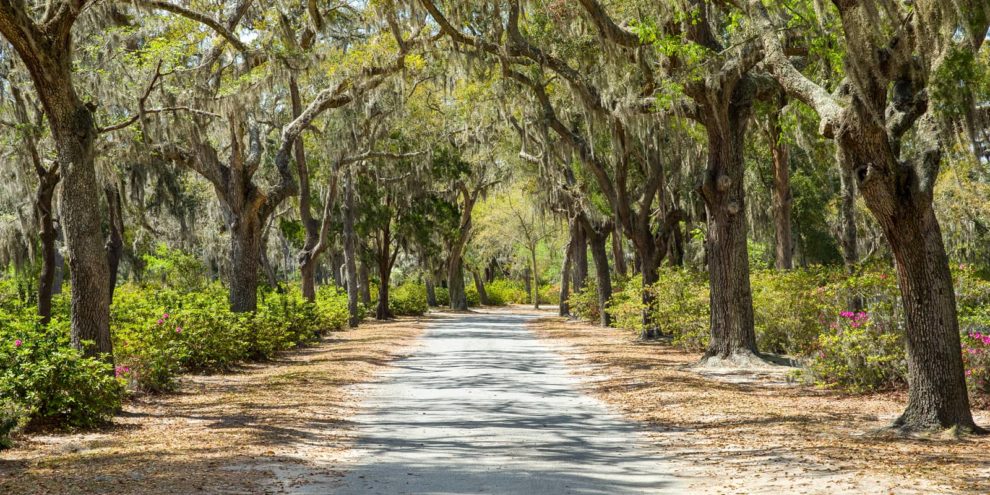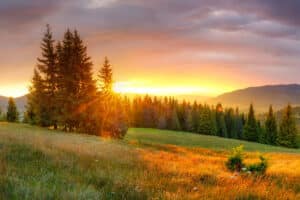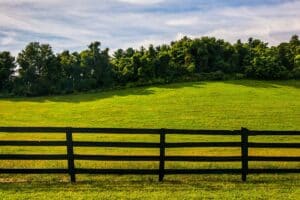According to the July LANDTHINK Pulse results, 38.1% of respondents indicated that they would prefer to purchase rural land for sale that was located in the Southeast region of the U.S. When the history for the coronavirus pandemic is written, one of the most powerful narratives will be about the urban exodus and the simultaneous repopulation of rural America. Americans, many of whom are young college graduates, have been moving back to the small towns and rural communities they once were encouraged to leave. Cities saw record-breaking population loss in 2020, as people sought a better (and more affordable) quality of life in the South.
July Pulse Sponsored by
The South is the fastest growing region in the United States, according to data from the 2020 census. For years the Southeast region has been in an expansion mode but migration to the Southeast accelerated during the pandemic, largely due to concerns for personal and family health and well-being, a desire to be closer to family, and a change in work arrangements. The immigration into rural America is demonstrably a plus for rural counties, bringing human and financial capital, a talented educated workforce, and outside funds to rural communities.
Last month, the July Pulse asked: In what part of the U.S. would you most prefer to own rural land?
To put it simply, the Southeast is an excellent region to live or invest in land. From the year-round sunshine, low cost of living, and being showered in southern hospitality, there’s plenty to love about this beautiful part of the country. The Southeast is made up of 12 states, that include Louisiana, Alabama, Mississippi, Georgia, Florida, South Carolina, North Carolina, Virginia, West Virginia, Tennessee, Kentucky and Arkansas. If you already live or own land in this part of the country, consider yourself lucky. According to World Population Review, five of the 10 cheapest states to live in the U.S. are located in the Southeast, including Mississippi, Georgia, Arkansas, Tennessee and Alabama.
The results of last months survey confirmed what we already knew- the Southeast is a hotbed for land investing. 2020 and 2021 have been remarkably difficult years, but deep pocket investors and ordinary citizens (many first time land buyers) rediscovered a safe haven in land, as evidenced by the robust land market and record-breaking sales that occurred in the second half of 2020. Without a doubt, the global crisis fueled the land buying frenzy and land values in the Southeast have risen rapidly over the last 12 months. Land investors rest easy knowing they hold a stable investment with very low volatility.
When it comes to choosing a location, investors look to spend their money in an area that’s expected to experience expanding demand and growth in the years ahead. But in today’s uncertain times, most land buyers want to live on the land they buy and a good financial return is a secondary bonus. People are building homesteads to incorporate homeschooling, working from home, and the ability to live off the land. The Southeast provides a range of year-round outdoor activities like hunting and fishing, a warmer climate, and a lower cost of living.
What makes land such a unique investment is that you can use it to generate multiple streams of income, and the Southeast also has one of the strongest timberland markets and because of its flat land, rich soil, and long growing season, the Southeast is also ripe for farmland investing.
In his LANDTHINK article Making the Financial Argument for Land Investing, Ben Alder’s assessment that “farmland and timberland is adaptive and any asset which can absorb a changing economic landscape is coveted and valuable” further validates the Southeast and Midwest as “hot spots” for investors, two regions known for their quality timberland and productive farmland.

Coming in a distant second, 11.8% of respondents said they would like to own rural land in the Southwest, where property owned by the some of the nation’s largest landowners are clustered. The Southwest region of the U.S generally includes Arizona, New Mexico, and adjacent portions of California, Colorado, Nevada, Oklahoma, Texas, and Utah. The southern and western parts of Texas, as well as New Mexico, are popular among ranchers. Large swaths of land in California are used by landowners to raise livestock, farm, ranch, and produce timber.
There has been a significant uptick in interest in lifestyle ranches. When picking up thousands of acres of ranch land, buyers are looking for a certain lifestyle, the ultimate social distancing retreat, as well as a solid investment. Some of the most sought-after ranches in the U.S. are located in New Mexico, Colorado, and Utah.
We were pleased with the large number of Pulse responses, and we thank everyone who answered the Pulse and shared it on social media with friends and connections in the land industry. LANDTHINK would like to extend a big thank thank you to Southeastern Land Group for sponsoring the July Pulse and for choosing a very interesting question to pose to our audience. If you’re looking for land for sale, or thinking about selling land in the Southeast, Southeastern Land Group is the name you need to remember. They are a full service land and farm brokerage company dedicated to providing the best service and the best results when it comes to buying or selling rural property.
Become a Pulse sponsor! It’s a great way to ensure your brokerage is the first one buyers and sellers call when they have a need to buy or sell property. You’ll get insane exposure on Social + Email + Web. That’s 500,000+ monthly eyes on you! Once you have it, you won’t want to give it up! Pulse sponsorships are offered on a first come first served basis and are subject to certain limitations. If your business is interested in becoming a Pulse sponsor or you want to suggest a question for the Pulse, please contact us.
This content may not be used or reproduced in any manner whatsoever, in part or in whole, without written permission of LANDTHINK. Use of this content without permission is a violation of federal copyright law. The articles, posts, comments, opinions and information provided by LANDTHINK are for informational and research purposes only and DOES NOT substitute or coincide with the advice of an attorney, accountant, real estate broker or any other licensed real estate professional. LANDTHINK strongly advises visitors and readers to seek their own professional guidance and advice related to buying, investing in or selling real estate.











Add Comment